Member states of the League of Nations
Between 1920 and 1939, a total of 63 countries became member states of the League of Nations. The Covenant forming the League of Nations was included in the Treaty of Versailles and came into force on 10 January 1920, with the League of Nations being dissolved on 18 April 1946; its assets and responsibilities were transferred to the United Nations.
The League's greatest extent was from 28 September 1934 (when Ecuador joined) to 23 February 1935 (when Paraguay withdrew) with 58 members. At this time, only Costa Rica (22 January 1925), Brazil (14 June 1926), Japan (27 March 1933) and Germany (19 October 1933) had withdrawn, and only Egypt was left to join (on 26 May 1937).
The members (listed from earliest joining and alphabetically if they joined on the same day) at this time were Argentina, Australia, Belgium, Bolivia, the British Empire, Canada, Chile, China, Colombia, Cuba, Czechoslovakia, Denmark, El Salvador, France, Greece, Guatemala, Haiti, Honduras, India, Italy, Liberia, the Netherlands, New Zealand, Nicaragua, Norway, Panama, Paraguay, Persia/Iran, Peru, Poland, Portugal, Romania, Siam, South Africa, Spain, Sweden, Switzerland, Uruguay, Venezuela, Yugoslavia, Austria, Bulgaria, Finland, Luxembourg, Albania, Estonia, Latvia, Lithuania, Hungary, the Irish Free State, Ethiopia, the Dominican Republic, Mexico, Turkey, Iraq, the Soviet Union, Afghanistan, and Ecuador.
Of the 42 founding members, 23 (or 24, counting Free France) were members when the League of Nations was dissolved in 1946. A further 21 countries joined between 1920 and 1937, but seven withdrew, left, or were expelled before 1946.
Countries are listed under the year in which they joined. The word "withdrew" indicates that a country left of its own choice. The word "left" indicates a country that ceased to exist after annexation by Germany, Italy or the Soviet Union. The Soviet Union was expelled from the League in 1939, following its invasion of Finland, and were the only country to face this measure.
Despite formulating the concept and signing the Covenant, the United States never joined the League of Nations, and some relatively isolated sovereign states in Asia also did not join, including Saudi Arabia, Yemen, Mongolia, Nepal, and Bhutan.
Likewise, none of the European microstates of Andorra, Liechtenstein, Monaco, San Marino, and Vatican City ever sought membership in the organization.
Map
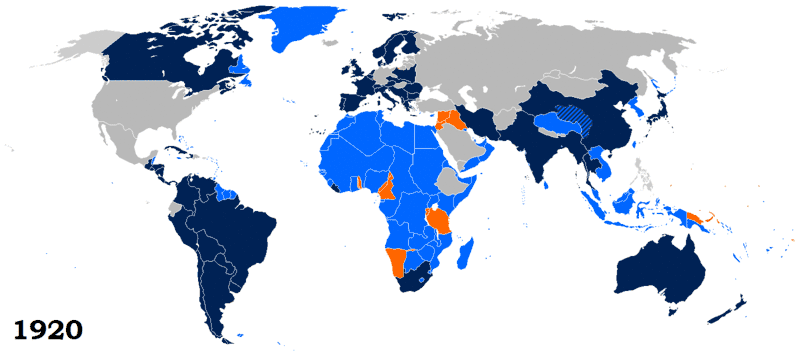
10 January 1920: founding members
 Argentina (withdrew 1921 on rejection of an Argentine resolution that all sovereign states would be admitted to the League.[1] It resumed full membership 26 September 1933[2])
Argentina (withdrew 1921 on rejection of an Argentine resolution that all sovereign states would be admitted to the League.[1] It resumed full membership 26 September 1933[2]).svg.png.webp) Belgium
Belgium Bolivia
Bolivia.svg.png.webp) Brazil (withdrew 14 June 1926)
Brazil (withdrew 14 June 1926) British Empire separate membership for:[3]
British Empire separate membership for:[3]
 Chile (withdrew 14 May 1938)
Chile (withdrew 14 May 1938).svg.png.webp) China
China Colombia
Colombia.svg.png.webp) Cuba
Cuba Czechoslovakia (occupied by Germany 15 March 1939)[4]
Czechoslovakia (occupied by Germany 15 March 1939)[4] Denmark[5]
Denmark[5]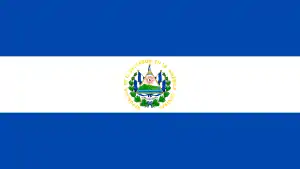 El Salvador (withdrew 11 August 1937)
El Salvador (withdrew 11 August 1937).svg.png.webp) France (Vichy France withdrew 18 April 1941; withdrawal not recognised by Free French forces)
France (Vichy France withdrew 18 April 1941; withdrawal not recognised by Free French forces).svg.png.webp) Greece
Greece Guatemala (withdrew 26 May 1936)
Guatemala (withdrew 26 May 1936).svg.png.webp) Haiti (withdrew April 1942)
Haiti (withdrew April 1942).gif) Honduras (withdrew 10 July 1936)
Honduras (withdrew 10 July 1936)_crowned.svg.png.webp) Italy (withdrew 11 December 1937)
Italy (withdrew 11 December 1937).svg.png.webp) Japan (withdrew 27 March 1933)
Japan (withdrew 27 March 1933) Liberia
Liberia Netherlands
Netherlands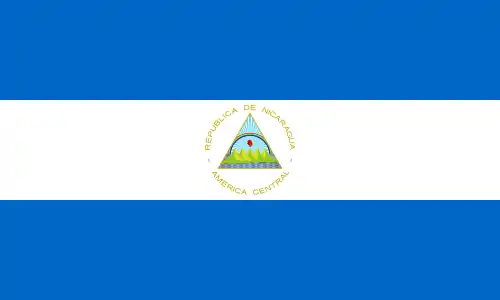 Nicaragua (withdrew 27 June 1936)
Nicaragua (withdrew 27 June 1936) Norway
Norway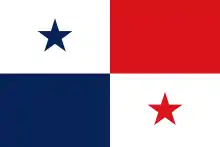 Panama
Panama.svg.png.webp) Paraguay (withdrew 23 February 1935)
Paraguay (withdrew 23 February 1935).svg.png.webp) Persia (known as Iran from 1934)
Persia (known as Iran from 1934) Peru (withdrew 8 April 1939)
Peru (withdrew 8 April 1939).svg.png.webp) Poland
Poland Portugal
Portugal Romania (withdrew 11 July 1940)[6]
Romania (withdrew 11 July 1940)[6] Siam (known as Thailand from 1939)[7]
Siam (known as Thailand from 1939)[7].svg.png.webp) Spain (withdrew May 1939)
Spain (withdrew May 1939) Sweden
Sweden Switzerland
Switzerland Uruguay
Uruguay.svg.png.webp) Venezuela (withdrew 12 July 1938)
Venezuela (withdrew 12 July 1938).svg.png.webp) Yugoslavia (known as Kingdom of Serbs, Croats and Slovenes until 1929)[8]
Yugoslavia (known as Kingdom of Serbs, Croats and Slovenes until 1929)[8]
1920
 Austria (joined 15 December 1920; occupied and annexed by Germany 13 March 1938)
Austria (joined 15 December 1920; occupied and annexed by Germany 13 March 1938) Bulgaria (joined 16 December 1920)
Bulgaria (joined 16 December 1920).svg.png.webp) Costa Rica (joined 16 December 1920; withdrew 22 January 1925)
Costa Rica (joined 16 December 1920; withdrew 22 January 1925) Finland (joined 16 December 1920)[9]
Finland (joined 16 December 1920)[9] Luxembourg (joined 16 December 1920)[10]
Luxembourg (joined 16 December 1920)[10].svg.png.webp) Albania (joined 17 December 1920)[11]
Albania (joined 17 December 1920)[11]
1921
 Estonia (joined 22 September 1921; occupied and annexed by the Soviet Union in 1940)
Estonia (joined 22 September 1921; occupied and annexed by the Soviet Union in 1940) Latvia (joined 22 September 1921; occupied and annexed by the Soviet Union in 1940)
Latvia (joined 22 September 1921; occupied and annexed by the Soviet Union in 1940).svg.png.webp) Lithuania (joined 22 September 1921; occupied and annexed by the Soviet Union in 1940)
Lithuania (joined 22 September 1921; occupied and annexed by the Soviet Union in 1940)
1922
.svg.png.webp) Hungary (joined 18 September 1922; withdrew 11 April 1939)
Hungary (joined 18 September 1922; withdrew 11 April 1939)
1923
 Irish Free State (joined 10 September 1923, known as Ireland from 1937)
Irish Free State (joined 10 September 1923, known as Ireland from 1937).svg.png.webp) Abyssinia (joined 28 September 1923)
Abyssinia (joined 28 September 1923)
1924
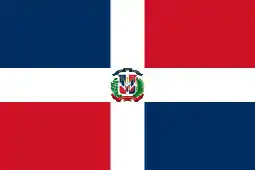 Dominican Republic (joined 28 September 1924)
Dominican Republic (joined 28 September 1924)
1926
.svg.png.webp) Germany (joined 8 September 1926; withdrew 19 October 1933)
Germany (joined 8 September 1926; withdrew 19 October 1933)
1934
.svg.png.webp) Soviet Union (joined 18 September 1934; expelled 14 December 1939)
Soviet Union (joined 18 September 1934; expelled 14 December 1939).svg.png.webp) Afghanistan (joined 27 September 1934)
Afghanistan (joined 27 September 1934)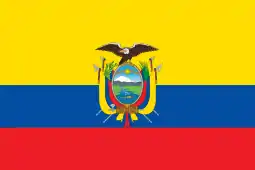 Ecuador (joined 28 September 1934)
Ecuador (joined 28 September 1934)
1937
.svg.png.webp) Egypt (joined 26 May 1937)
Egypt (joined 26 May 1937)
See also
References
- South America Archived 10 May 2008 at the Wayback Machine, Encyclopedia of World History
- League of Nations chronology, United Nations
- Members of the 1st Assembly, League of Nations, Geneva, 15 November – 18 December 1920.
- Czechoslovakia never formally left the League and was present at the last meeting of the Assembly in 1946
- Left upon German takeover in 1943
- Hannsjoachim Wolfgang Koch, Macmillan International Higher Education, 1985, Aspects Of The Third Reich, p. 297
- Hell, Stephan (8 January 2020). "A seat at the table". Bangkok Post. Retrieved 8 January 2020.
- Occupied by Axis Powers 1941–1945
- Withdrew from active participation in the League after its defeat by the Soviet Union in 1944.
- Forced to withdraw by German occupation in May 1940 and incorporation into the German Reich.
- Forced to withdraw by Italian invasion of 1939.
- Toledo-García, Itzel; University of Essex, UK: ‘’"La cuestión de la dignidad nacional en el ingreso de México a la Sociedad de Naciones, 1919-1931"’’ Retrieved 4 September 2016. (Translated from Spanish: "On September 7th, 1931, the British Empire, Germany, Northern Ireland, Spain, France, Italy and Japan began the initiative; next day the proposal was adopted unanimously by the assembly, and the invitation was sent to the government of Mexico. The 10th of September the acceptance was communicated in Geneva… Two days later, Mexico was declared member of the League of Nations.")
Further reading
- Hell, Stefan (2019). Siam and The League of Nations; Modernisation, Sovereignty, and Multilateral Diplomacy, 1920-1940. Bangkok: River Books. ISBN 9789749863893. Retrieved 8 January 2020.